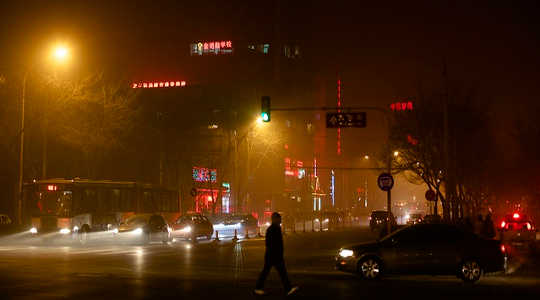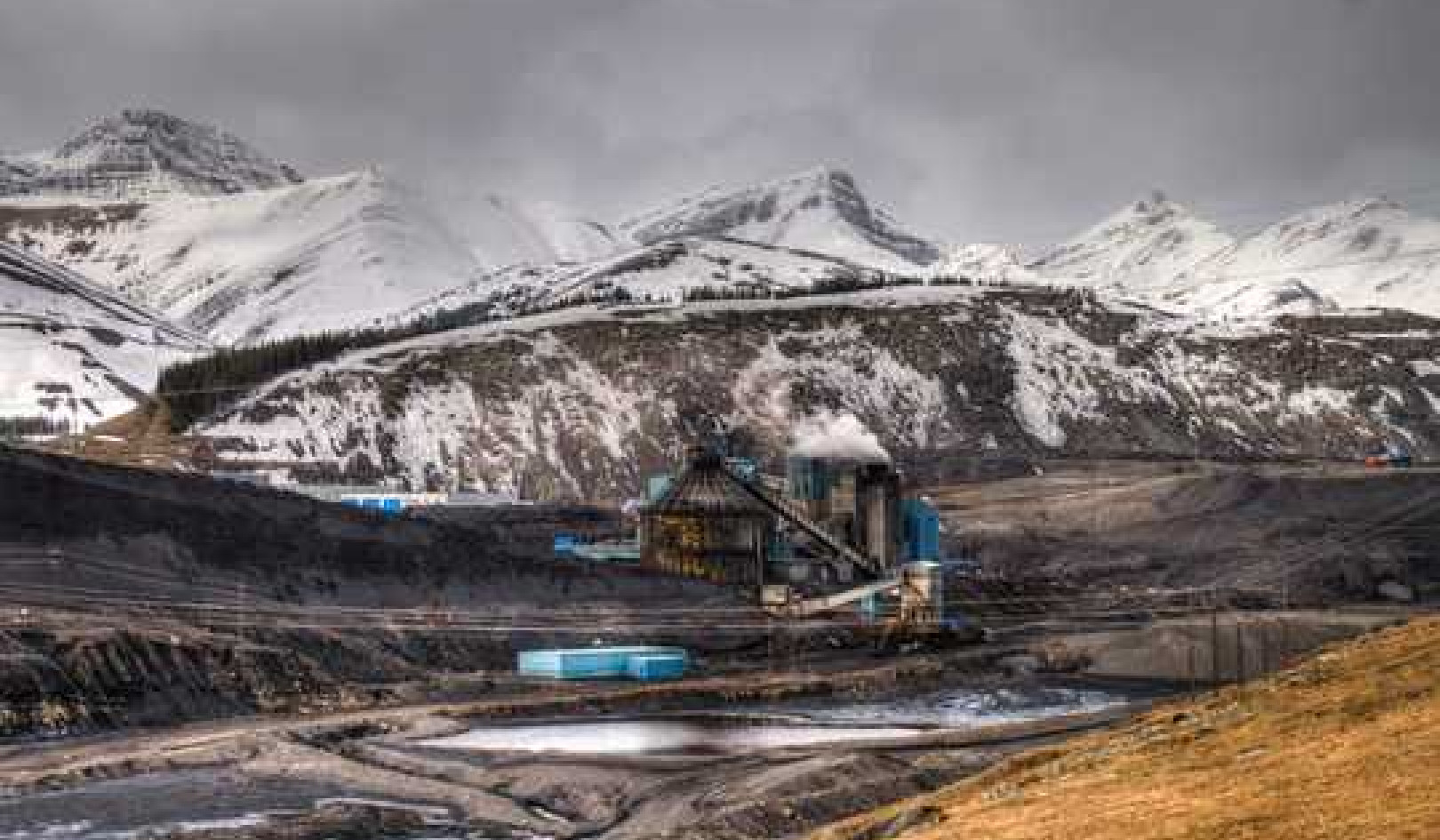 Beijing is blanketed in a thick layer of pollution, January 2013. Image: Ville Oksanen via Flickr
Beijing is blanketed in a thick layer of pollution, January 2013. Image: Ville Oksanen via Flickr
Research shows that polar warming could explain the episode of severe winter air pollution Beijing experienced in 2013, and says China has more to come.
The future for China is likely to become increasingly unclear – and lurking behind the obscured outlook in the nation’s capital is the spectre of climate change.
The melting of the Arctic Ocean sea ice and the greater falls of snow in Siberia may be responsible for stagnant air conditions that blanketed a damaging screen of polluting haze over Beijing and the East China plains in January 2013, according to new research.
Smoke from power stations, car exhausts and factory chimneys must have contributed. But a month-long episode of severe and choking air pollution that made world headlines now seems to have been made possible by climate changes that shifted China’s winter monsoon, to trap tiny floating particles of soot and dust over the nation’s biggest cities and industrial centres.
If so, the haze could get worse, as the Arctic goes on warming and the northern latitudes get the extra burden of snow.
China crisis
“Emissions in China have been decreasing over the last four years, but the severe winter haze is not getting better,” says Yuhang Wang, a professor in the School of Earth and Atmospheric Sciences at Georgia Tech in the US.
“Mostly, that’s because of a very rapid change in the high polar regions where sea ice is decreasing and snowfall is increasing. This perturbation keeps cold air from getting into the eastern parts of China where it would flush out the air pollution.”
China has taken steps to reduce pollutant haze, and continues to do so. But though the 2013 episode prompted strict emissions reduction targets, the winter haze returned.
“The very rapid change in polar warming is really having a large impact on China. That gives China an incentive not only to follow through on air pollutant emission reductions, but also to look at the potential for reducing greenhouse gas emissions”
Professor Wang and colleagues wondered if other factors were at work. They report, in Science Advances journal, that they worked from satellite data and visibility measurements.
They created their own pollution potential index (PPI) and used anomalies in air temperature gradient and surface wind speeds to answer questions about the movement of air over eastern China, a series of basin formations flanked by mountains to the west and ocean to the east.
“Once we generated the PPI and combined it with the visibility data, it was obvious that January 2013 was well beyond anything that had ever been seen before, going back at least three decades,” says Wang. “But in that month emissions had not changed, so we knew there had to be another factor.”
So then they looked at large-scale factors – sea ice, snowfall, the timetable of the Pacific climate phenomenon known as El Niño and other climate oscillations. They found a correlation between stagnant air conditions over China and the record low sea ice in the Arctic in 2012 plus record snowfall in the higher latitudes of Siberia.
“The reductions in sea ice and increase in snowfall have the effect of damping the climatological pressure ridge structure over China,” Professor Wang says. “That flattens the temperature and pressure gradients and moves the East Asian Winter Monsoon to the east, decreasing wind speeds and creating an atmospheric circulation that makes the air in China more stagnant.”
The same factors were at work in the winter of 2016-17. There were low levels of Arctic sea ice with high snowfall and severe haze. So the message from the research is: expect more of the same.
Beijing Olympics
The stakes are high: Beijing is to host the 2022 Winter Olympics. A repeat of the 2013 winter haze would be much worse than the smog during the 2008 summer Olympic Games in Beijing, because in summer the dust and soot are more likely to be blown away or washed out by rain, the scientists say.
“Despite the efforts to reduce emissions, we think that haze will probably continue for the future. This is partly climate-driven now, so it probably won’t get much better in the winter. Emissions are no longer the only driver of these conditions,” says Professor Wang.
“The very rapid change in polar warming is really having a large impact on China. That gives China an incentive not only to follow through on air pollutant emission reductions, but also to look at the potential for reducing greenhouse gas emissions. Our research shows that cutting greenhouse gases would help with the winter haze problem.” – Climate News Network
About the Author
 Tim Radford is a freelance journalist. He worked for The Guardian for 32 years, becoming (among other things) letters editor, arts editor, literary editor and science editor. He won the Association of British Science Writers award for science writer of the year four times. He served on the UK committee for the International Decade for Natural Disaster Reduction. He has lectured about science and the media in dozens of British and foreign cities.
Tim Radford is a freelance journalist. He worked for The Guardian for 32 years, becoming (among other things) letters editor, arts editor, literary editor and science editor. He won the Association of British Science Writers award for science writer of the year four times. He served on the UK committee for the International Decade for Natural Disaster Reduction. He has lectured about science and the media in dozens of British and foreign cities.
 Book by this Author:
Book by this Author:
Science that Changed the World: The untold story of the other 1960s revolution
by Tim Radford.
Click here for more info and/or to order this book on Amazon. (Kindle book)































